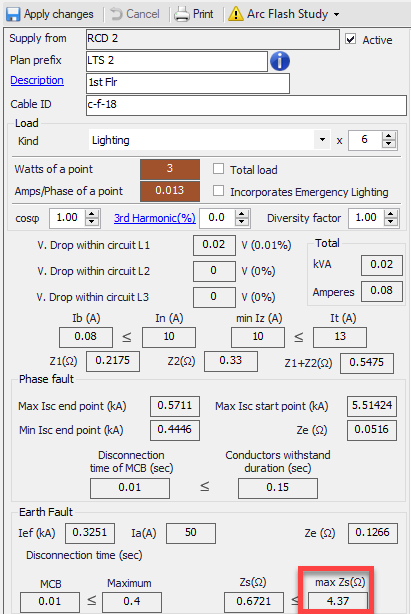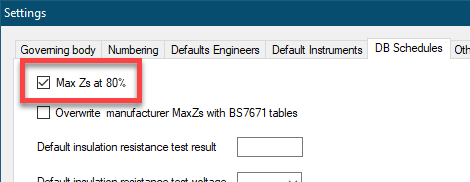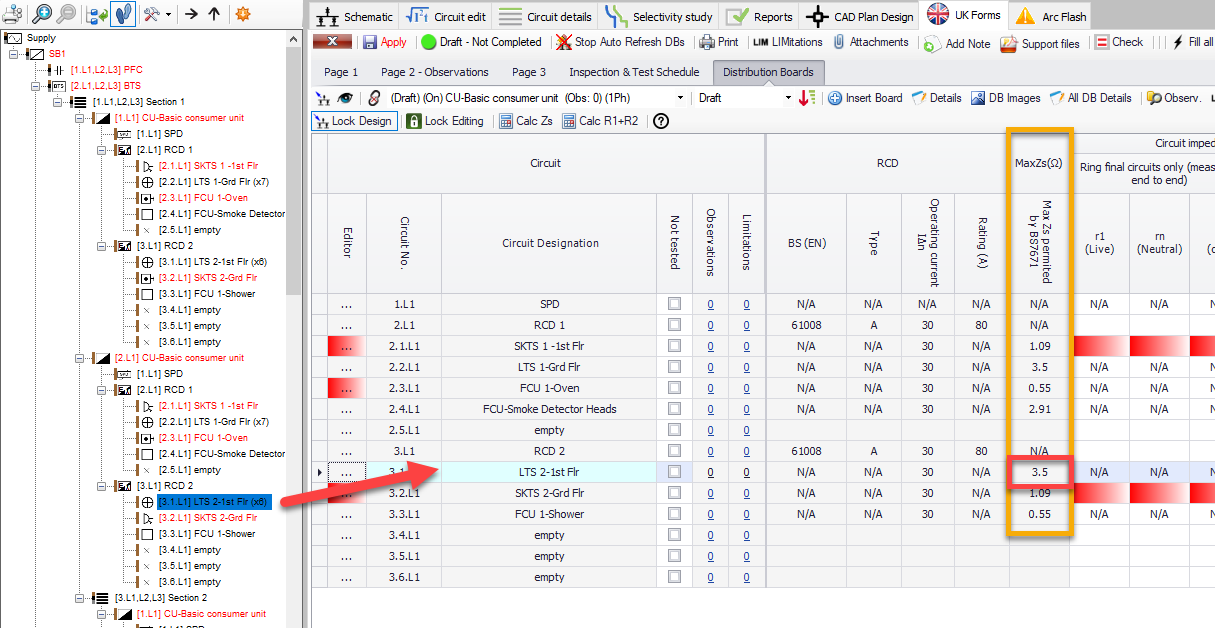MaxZs at 80%
UK Forms permits users to apply a multiplier of 0.8 to calculated maximum Zs value (of ElectricalOM) to compensate the conductor temperatures. The concept is well defined on the document quoted below.
"For fault protection, the limiting values of earth fault loop impedances, Zs, are given in Tables 41.2, 41.3 and 41.4 of BS 7671, for many commonly-used overcurrent protective devices. The values given in those tables are the limits that apply under earth fault conditions, when the temperature of the conductors can be expected to be higher than when testing is undertaken (usually under no-load conditions). Consequently, the values of earth fault loop impedance when measured at ambient temperature should be lower than the limits set out in BS 7671.
It is generally accepted that, where the measured earth fault loop impedance of a circuit is not greater than 80% of the relevant limit specified in BS 7671, the impedance can be expected to be sufficiently low under earth fault conditions to meet the relevant limit specified in BS 7671, and for the protective device to automatically disconnect within the time specified." (NICEIC, July 2011, Maximum Earth Fault Loop Impedance Value for Overcurrent Protective Devices in Common Use, for Fault Finding Protection).
The actual maximum permitted Zs value can be seen within the calculations area of ElectricalOM's Circuit Edit module.

Maximum permitted Zs is also shown on Distribution Boards tab of UK Forms add-on. The value will be equal to ElectricalOM's value if the relevant box is not ticked.

However, if MaxZs at 80% box is ticked, then, all MaxZs values will be reduced by 80% on UK Forms' certificate.

